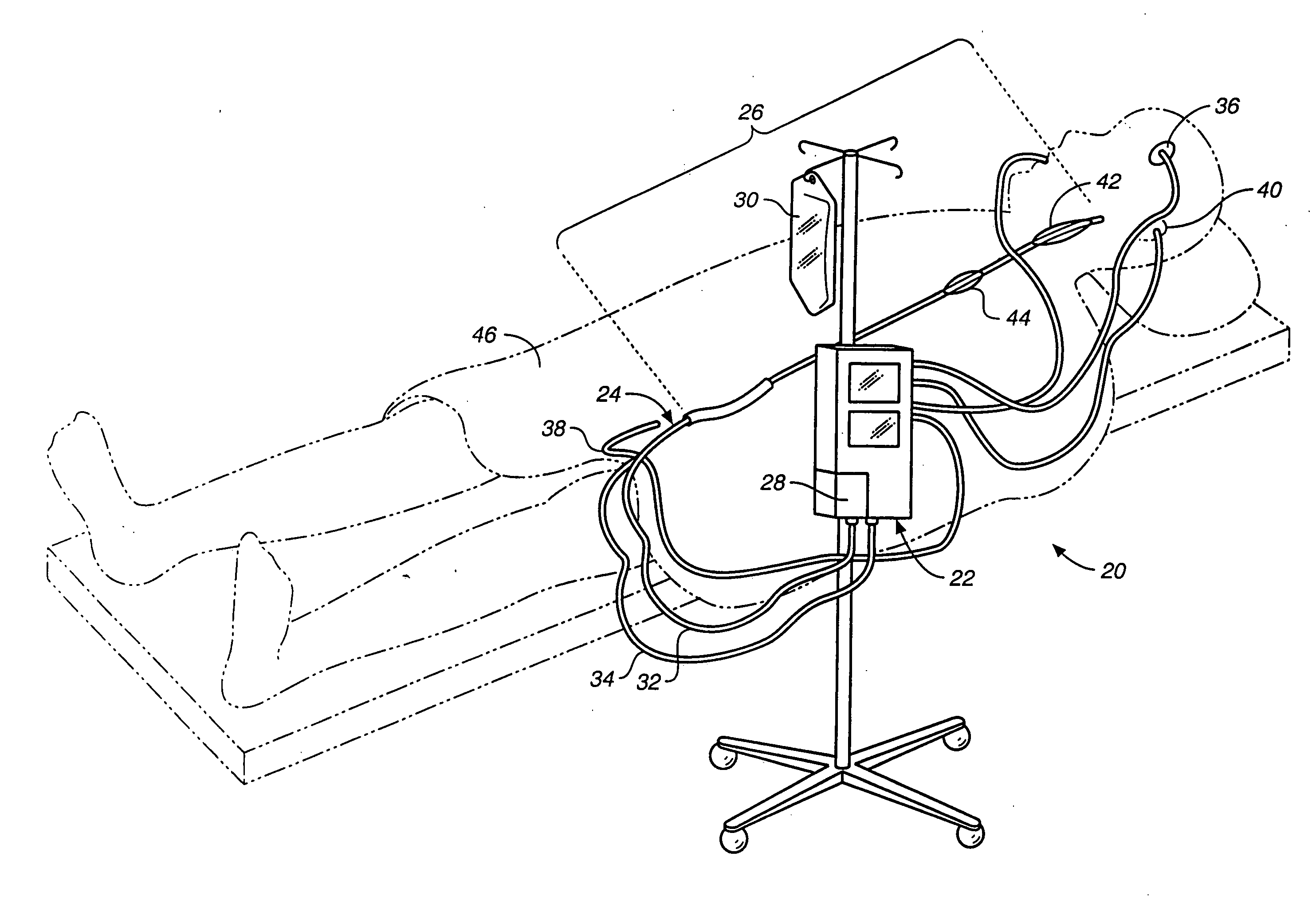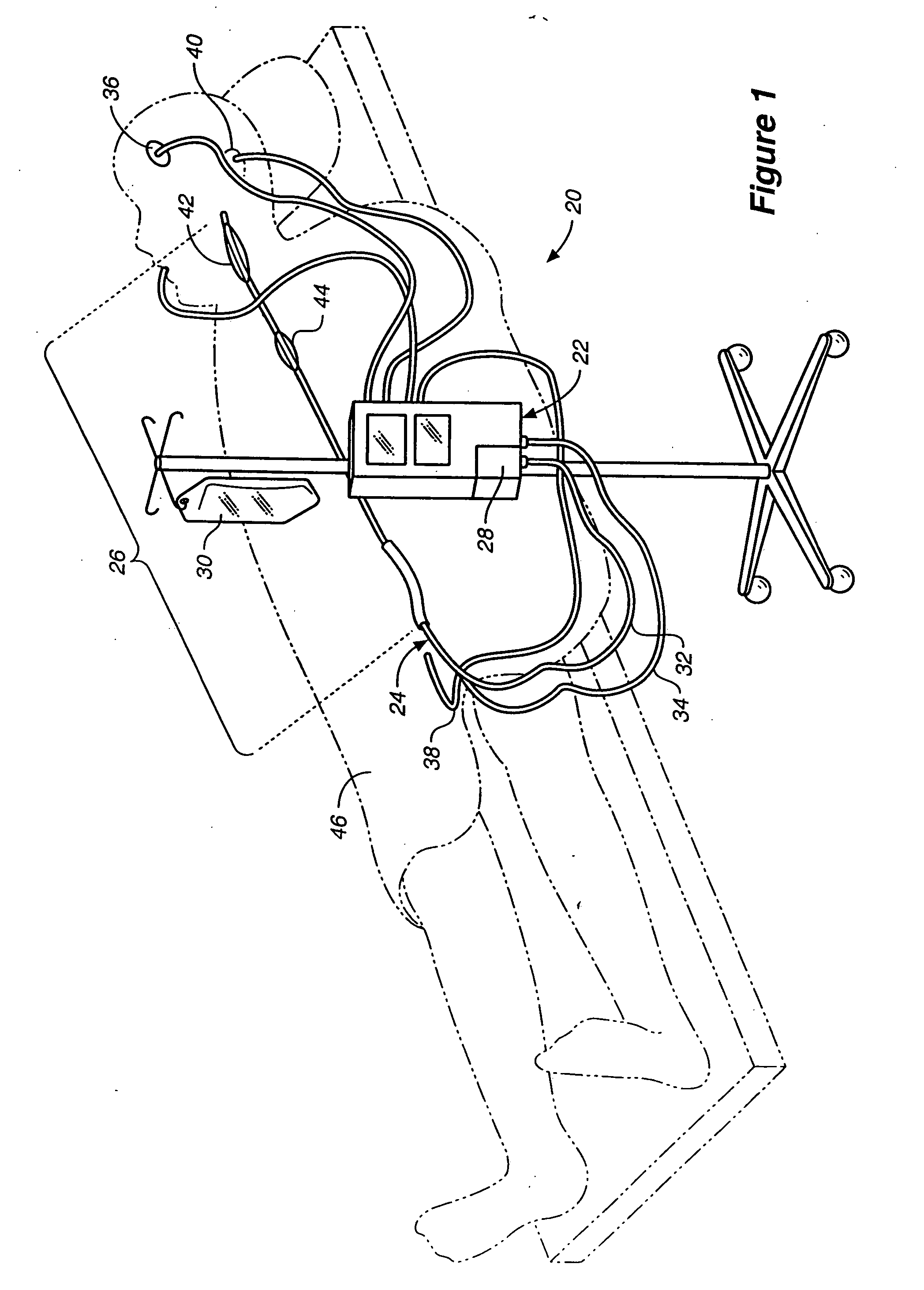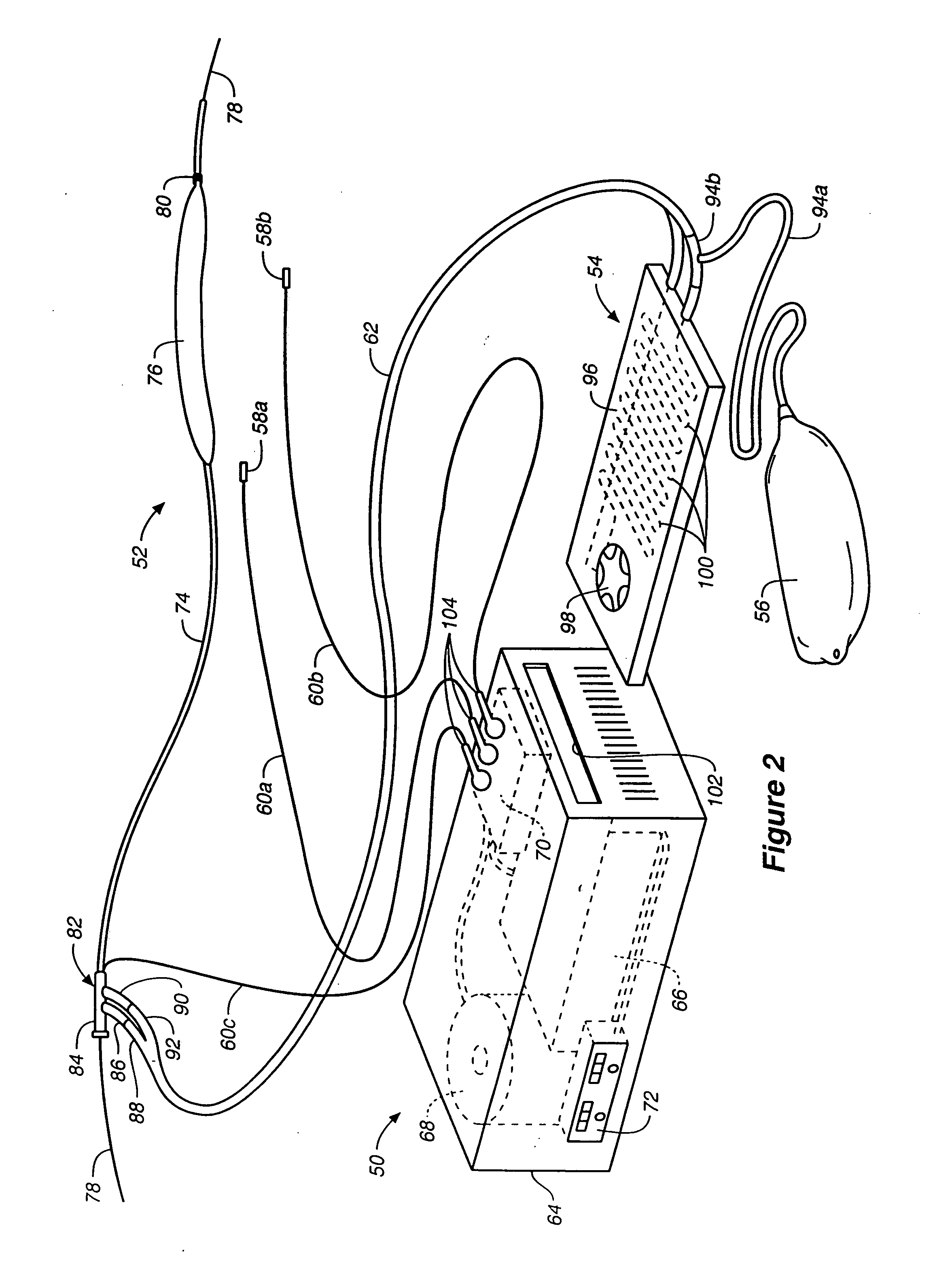Method and system for control of a patient's body temperature by way of a transluminally insertable heat exchange catheter
a technology of heat exchange catheter and patient body temperature, which is applied in the field of medical devices and methods, can solve the problems of life-threatening, accidental hypothermia, and increased risk of death, and achieve the effect of reducing the ramp ra
- Summary
- Abstract
- Description
- Claims
- Application Information
AI Technical Summary
Benefits of technology
Problems solved by technology
Method used
Image
Examples
third embodiment
[0167] A pressure regulator valve to regulate the pump output pressure is desirable. It may also be seen that such a pressure regulator may function to damp any pressure variations, such as vibrations in the fluid line generated by the pump. There are number of ways of regulating pressure, including the aforementioned damping chamber in the embodiment of FIGS. 10A-10D. In the heat exchange cassette 400b of FIG. 14A, the feedblock section 554 may include an exemplary pressure regulation system comprises a spring loaded diaphragm that flexes to relieve pressures above a threshold value to ensure that the heat exchange catheter is provided with heat transfer fluid at a relatively constant pressure. In a third embodiment, describe below, there is no pressure regulator in direct contact with the working fluid under pressure, but instead the current of the pump motor is monitored and maintained at a constant value. Those of skill in the art will understand that these are not the only type...
second embodiment
[0168] In one embodiment of a pressure regulator valve shown in FIG. 14B, the outlet of the pump is fluidly connected to the inlet of the pressure regulator chamber 646. The pressure of the fluid at the pump output may vary somewhat depending on wear and fluid temperature, and may be, for example, 45-54 psi. As mentioned previously with respect to FIG. 13E, a portion of the pressure regulator of the second embodiment resides within the reservoir chamber 684 and includes the pressure regulator shaft 598 mounted for linear adjustment within the flange 600, and the reference spring 604 biased between the shaft and the diaphragm 606.
[0169] A push rod 700 attaches to the right side of the diaphragm 606 and extends through a throttle chamber 702. The throttle chamber 702 has a cloverleaf cross-sectional configuration in the form of a central throttle aperture 704 surrounded by four lobes 706, as may best be seen in FIG. 14C. The push rod 700 extends to the right and through a throttle ape...
PUM
 Login to View More
Login to View More Abstract
Description
Claims
Application Information
 Login to View More
Login to View More - R&D
- Intellectual Property
- Life Sciences
- Materials
- Tech Scout
- Unparalleled Data Quality
- Higher Quality Content
- 60% Fewer Hallucinations
Browse by: Latest US Patents, China's latest patents, Technical Efficacy Thesaurus, Application Domain, Technology Topic, Popular Technical Reports.
© 2025 PatSnap. All rights reserved.Legal|Privacy policy|Modern Slavery Act Transparency Statement|Sitemap|About US| Contact US: help@patsnap.com



